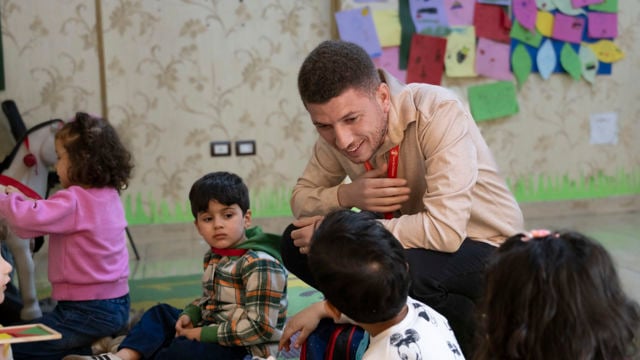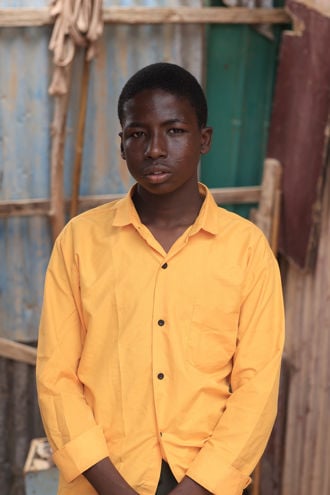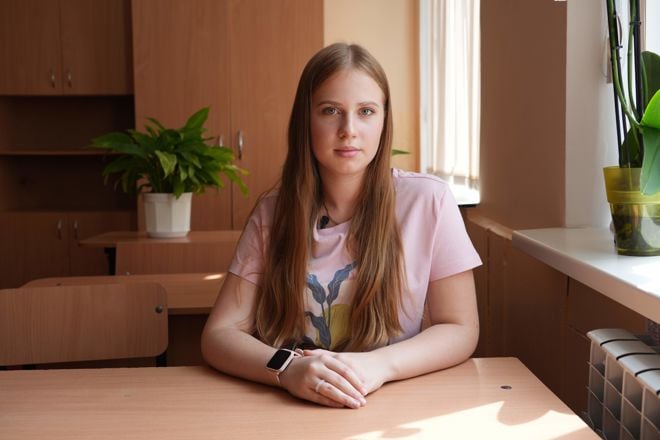Young Voices in a World in Crisis: – We must create a place where children can play and learn

Jehad works as a volunteer at a center for children who have fled from Gaza. Save the Children runs two such centers in Cairo. More than 5,000 children are on the waiting list for a spot.
In 2024, the world saw a record number of armed conflicts – the highest in over 70 years. Children are hit the hardest. Norad supports initiatives that provide children with safety, education, and a voice.
– We need not just absence of war, but presence of peace. It’s about creating a place where people can live without fear, where children can play and learn – and where families can stay together, says Sharmake (14) to Save the Children. He grew up in Somalia with a childhood marked by war, violence, and unrest. But the 14-year-old believes the future can be better.

Sharmake is convinced that investing in education is one of the most important things that can be done to create a more peaceful world.
– When people are educated, they can understand each other better. They can solve problems without turning to violence. In Somalia, many children like me have grown up knowing nothing but war. We’ve seen the worst that humanity has to offer, but I believe that if we are given a chance to learn, we can become the ones who make the world a better place.
Sharmake is one of many children and young people facing an uncertain summer. A new report from the Peace Research Institute Oslo (PRIO) shows that the world has reached a historic high in conflict levels, with 61 armed conflicts in 2024 across 36 countries.
Behind these numbers are millions of children and youth living in fear, on the run, and without access to education.
Education as a key to peace
Education is one of the most effective ways to protect children in crisis situations. When children can go to school, the risk of recruitment into armed groups, child labor, and early marriage is reduced. At the same time, education gives children and youth the tools they need to build a better future – both for themselves and for the societies they live in.
– I thought we would return to school soon, that everything would be fine – but it was not like that, says Yulia (14). She lives in western Ukraine, in an area where many internally displaced people have settled. There, she received remote schooling for one semester. Still, the 14-year-old has made plans for her future. She wants to study medicine and become a rehabilitation therapist – a profession that will be in high demand in Ukraine.

At school, the air raid alarm went off frequently. Yulia and the students had to spend a lot of time in the shelter.
– I know I must help rebuild our country. I need to be smart and keep studying, says Yulia.
Norway supports a range of initiatives that give children in conflict areas access to education, including through cooperation with organizations such as Save the Children, UNICEF, and the Norwegian Refugee Council, and through the Nansen Support Programme for Ukraine.
– In a time when conflicts are increasing and becoming more complex, it is crucial that the international community does not pull back. We must listen to young people’s hopes for their future, says Stine Horn, Acting Department Director for for Humanitarian Assistance and Comprehensive Response.
That’s why Norway is prioritizing child protection in the 2025 humanitarian aid budget.

As we head into summer, it’s easy to turn our attention inward. But children living in the midst of wars and conflicts created by adults remind us that we cannot turn our backs. They have the right to protection and to have a say in shaping their own future.

This article is partially based on text from one of Norad’s partner organizations. Read the full article from Save the Children: Stories from War (link to Save the Children’s article).